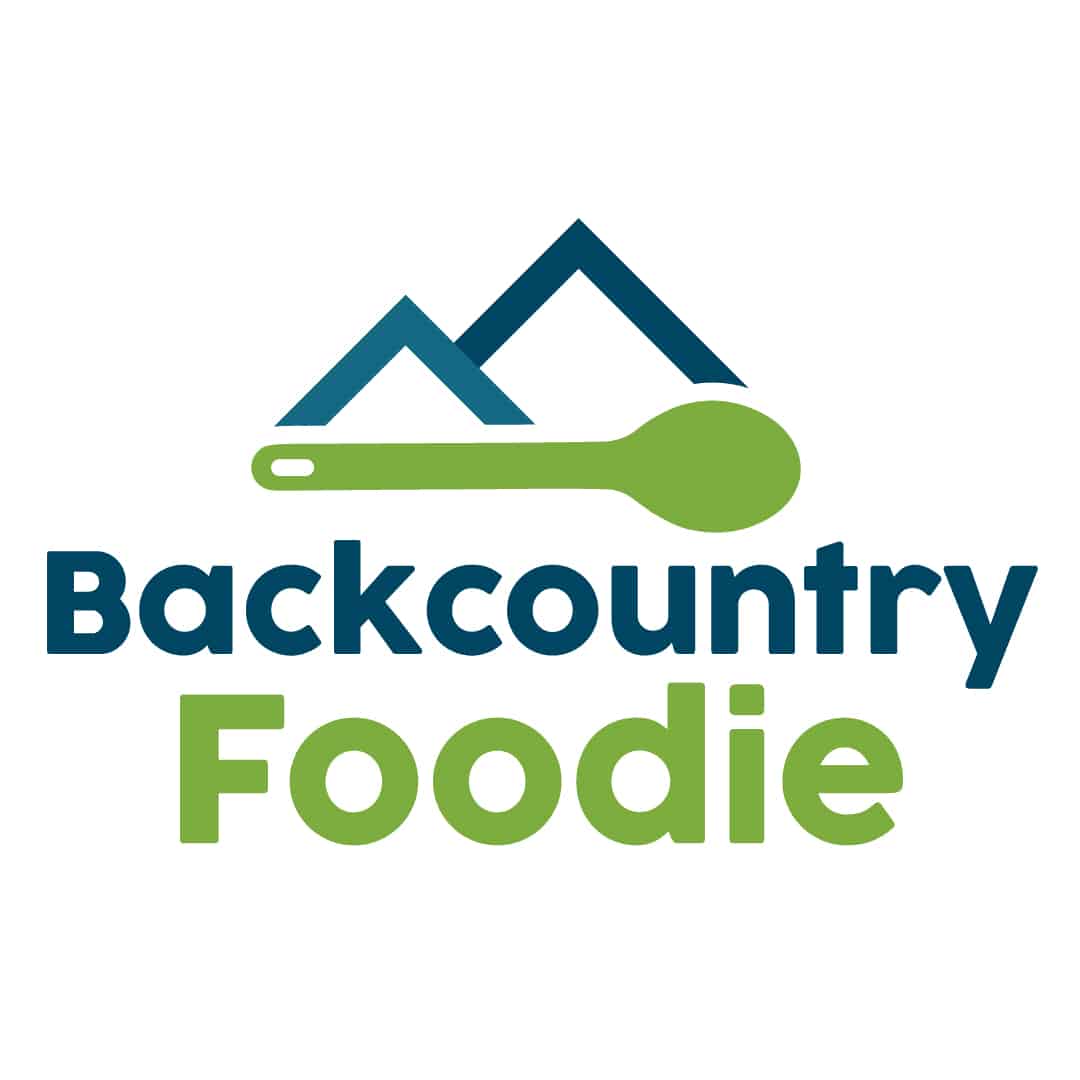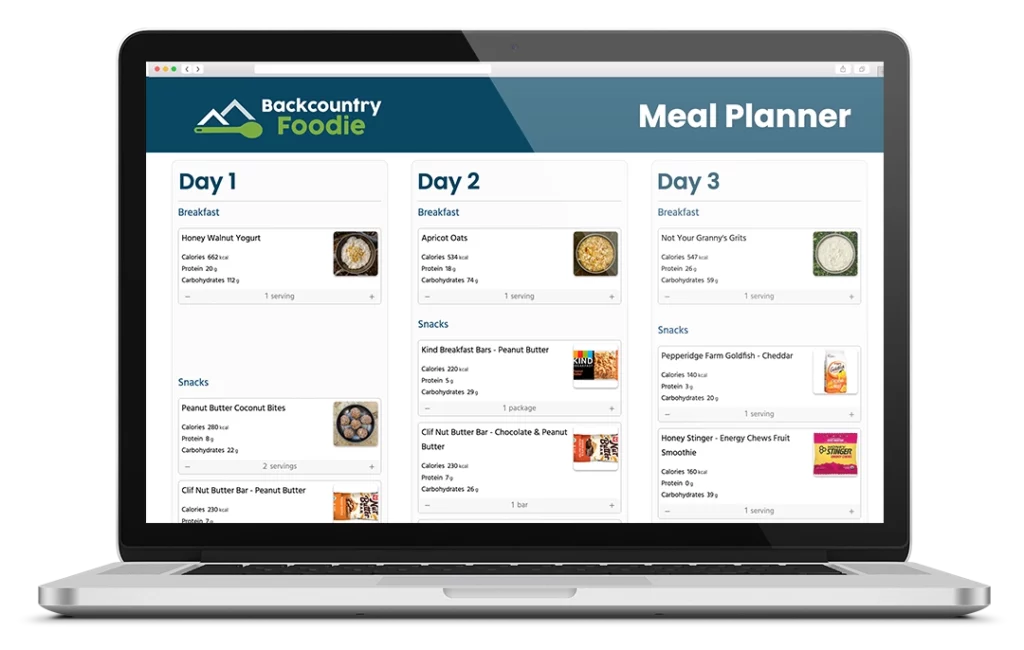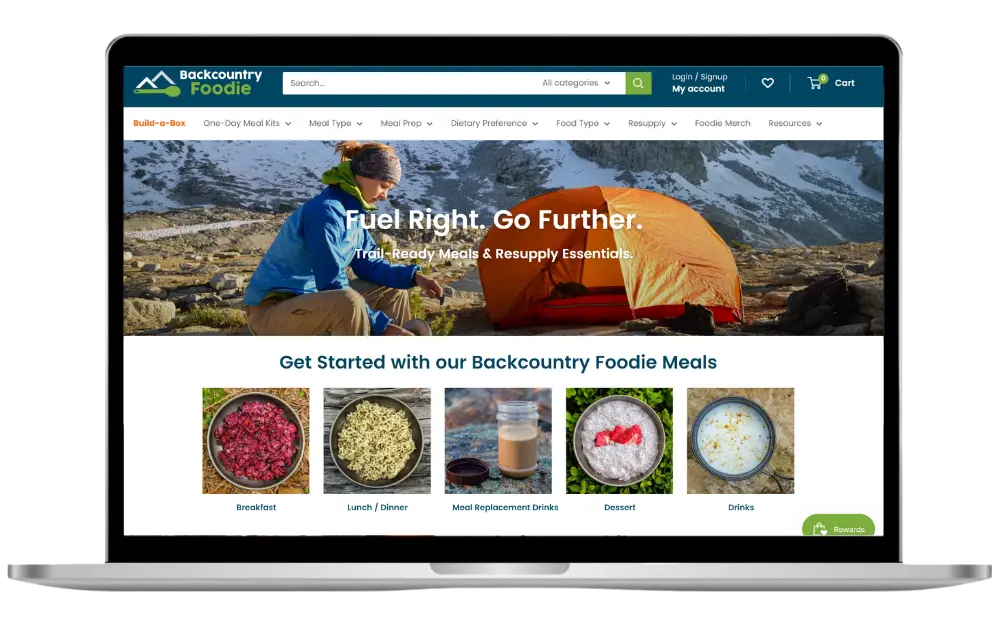Ultralight Backpacking Recipes
Ultralight Backpacking Recipe Membership
Nutritious, Dietitian-Created Recipes to Stay Energized on the Trail
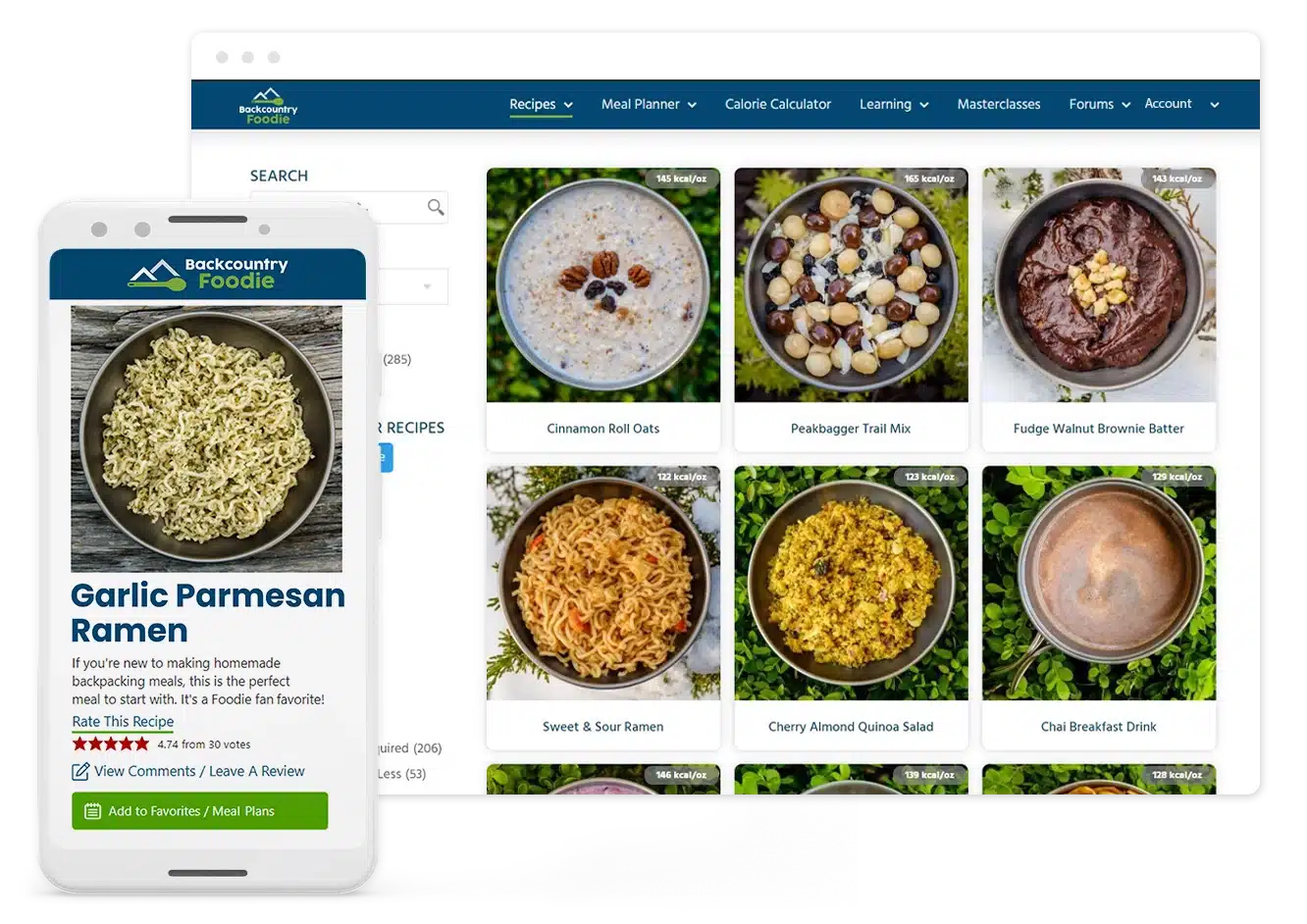
Featured Recipe
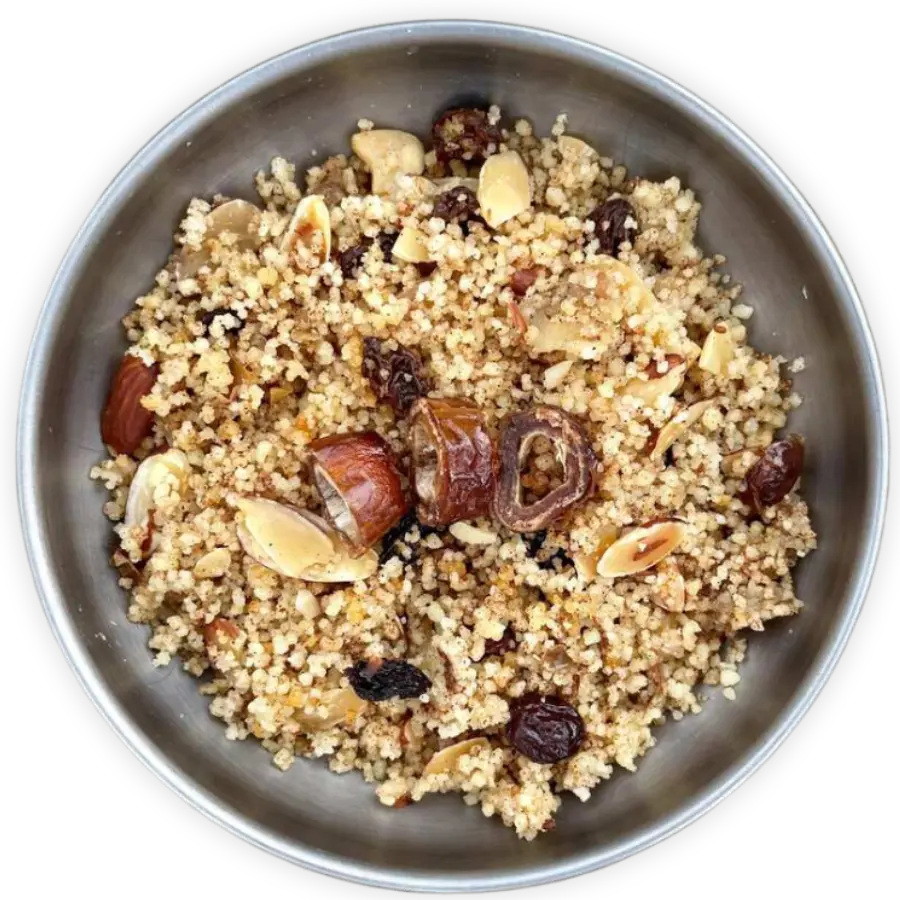
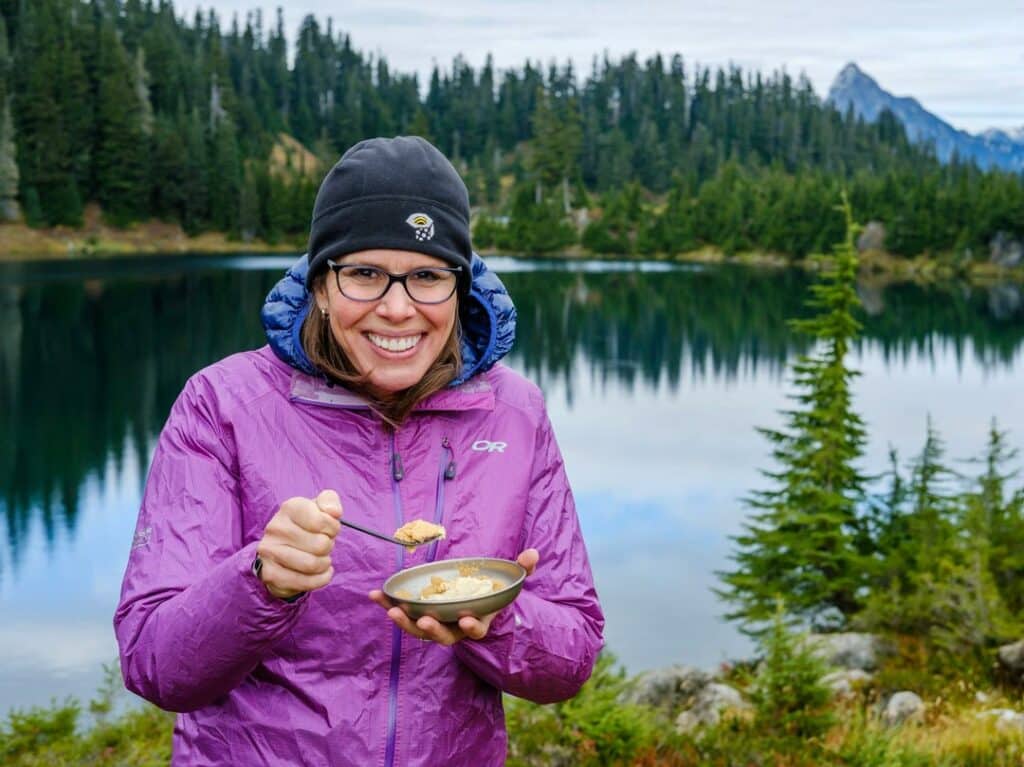
Having trouble creating nutritious and lightweight meals for your adventures?
Look no further! At Backcountry Foodie, we specialize in creating ultralight recipes that are not only delicious but also packed with the essential nutrients your body needs. With countless recipe ideas and expert tips, we’re here to help you take your outdoor culinary adventure to the next level.
Why Choose
Backcountry Foodie?
- Dietitian-Created & Trail Tested
- Designed to Meet Backpackers' Specific Needs
- Easy to Prepare at Home & on Trail
- Ultralight Weight & Low Volume
Quick Video Tutorial
Watch a Live Demo of Our Recipe Membership.
Hear From Our Members
Read Testimonials About Using Our Membership.
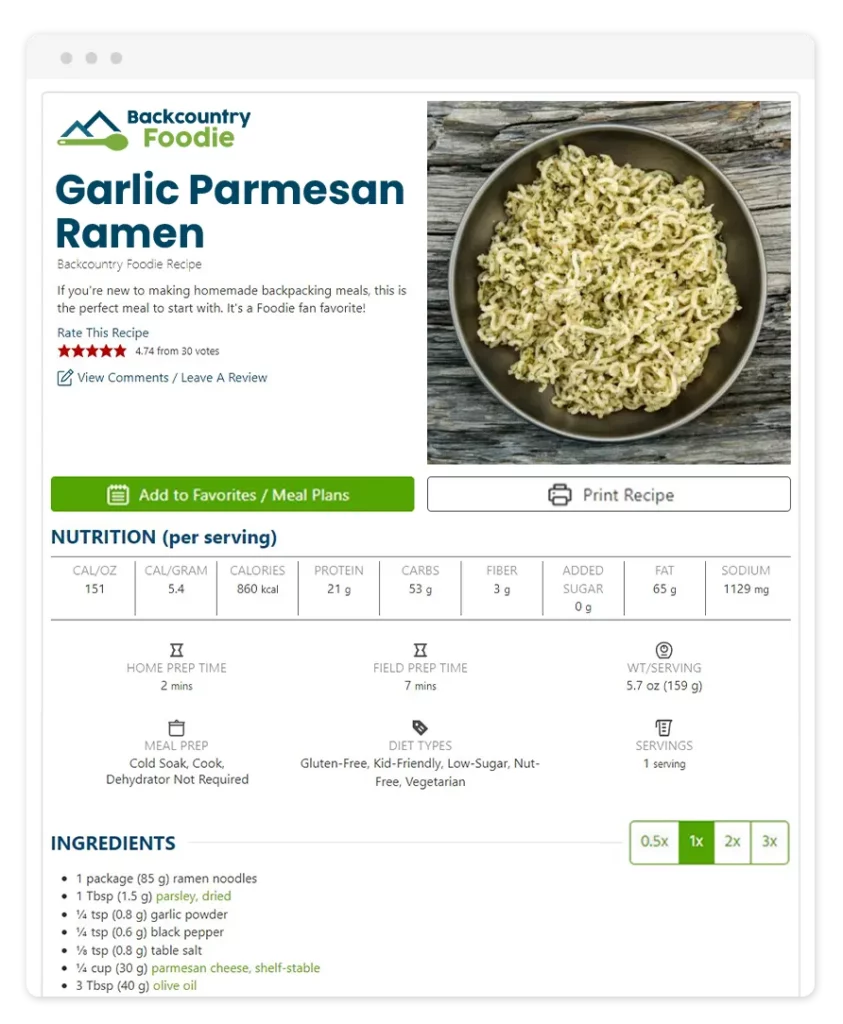
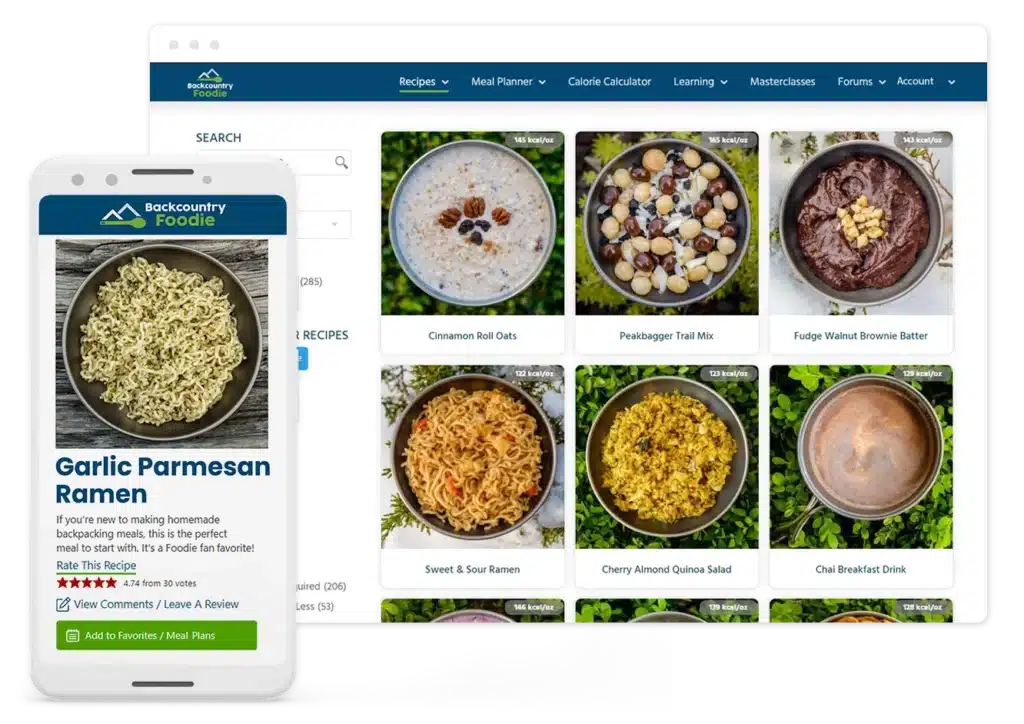

Membership Benefits
New Recipe
Every Month
Aaron's Advice
Membership Office Hours
Coupon Codes
for Recipe Ingredients
10% OFF
Shop Orders
Recipe
Membership-
200+ Ultralight Backpacking Recipes
-
New Recipes Added Monthly
-
Complete Nutrition Profile & Dry Weight
-
Metric & US Customary Measurements
-
Adjustable Serving Sizes
-
Printable Field Instruction Labels
-
Search & Filter Recipes by Preferences
-
Hiking Calorie Calculator
-
$100's Worth of Discount Codes
Cancel Any Time
Meal Planner
Membership-
All Recipe Features Plus...
-
Favorite Recipes Collection
-
Create Unlimited Multi-Day Meal Plans
-
43 Days of Dietitian-Created Meal Plans
-
100's of Commercial Meals & Snacks
-
Auto-Generated Shopping Lists
-
Dietitian-moderated Forums
Cancel Any Time
Meal Planner+
Membership-
All Meal Planner Features PLUS...
-
Live Monthly Video Q&A with Aaron
-
On-Demand Masterclasses $120 value
-
Backpacking Food 101
-
Don't Just Eat, Eat Well
-
High Altitude & Cold Weather Nutrition
-
Ultralight Meal Planning
-
Nutrition for the Bariatric Backpacker
-
Mastering Backpacking with Diabetes
Cancel Any Time
Recipe
Membership
Meal Planner Membership
Meal Planner+
Membership
200+ Dietitian-Created Ultralight Recipes
New Recipes Added Monthly
Complete Nutrition Profile & Dry Weight
Metric & US Customary Measurements
Adjustable Serving Sizes
Field Instruction Labels for Packaging
Search by Ingredients & Sort by Calories per Ounce
Filter by Special Diet, Meal Type, Meal Prep, & More
Suggested Recipes Using Similar Ingredients
Meal Planner
Hiking Calorie Calculator
Favorite Recipes Collection
Create Unlimited Custom Meal Plans
Meal Plans Auto-Tabulate Daily Nutrition Profile
100’s of Commercial Meals & Snacks
Shopping Lists Auto-Generated & Mobile-Friendly
3-Day, 5-Day, & 7-Day Meal Plan Templates
43 Sample Meal Plans Weighing Less than 2 lbs per Day
Community Forums
Dietitian Moderated Forums
Hiker to Hiker Discussions
On-Demand Masterclasses – $120 value!
Backpacking Food 101
Don’t Just Eat, Eat Well – How to Avoid Hitting the Wall
High Altitude & Cold Weather Nutrition
Ultralight Meal Planning
Nutrition for the Bariatric Backpacker
Mastering Backpacking with Diabetes
Backpacking Food & Resupply Discount
Enjoy 10% Off All Shop Orders
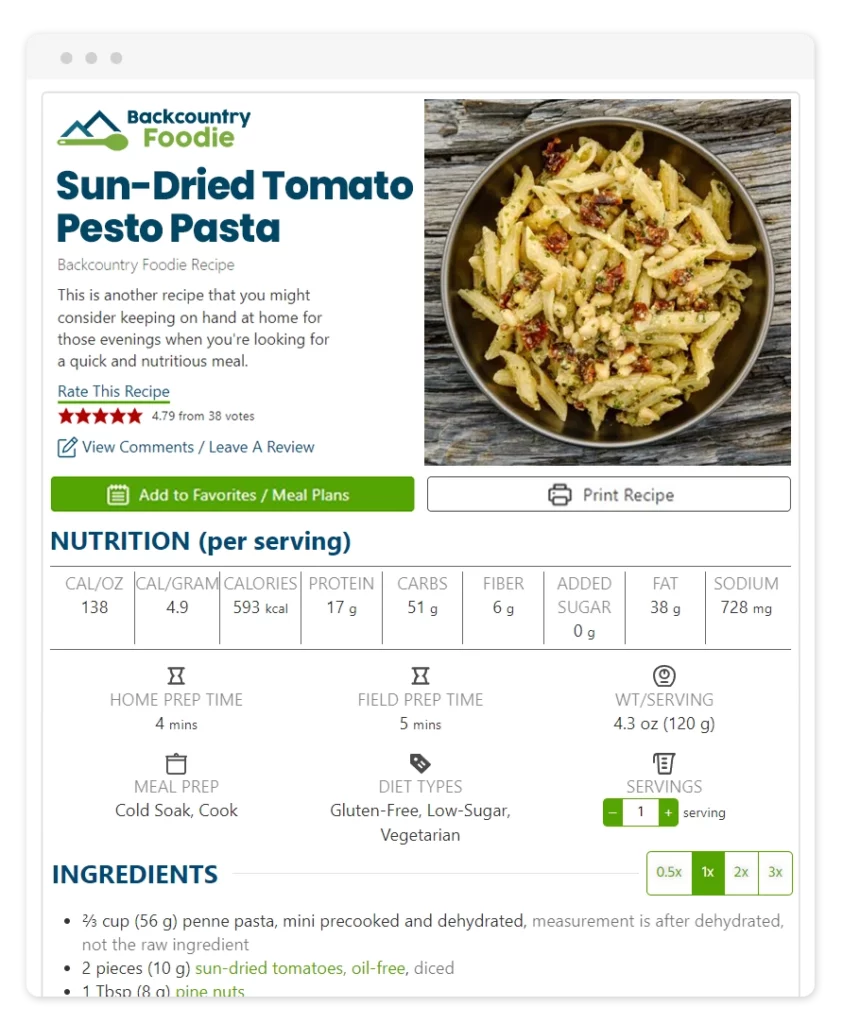
Why a Recipe Membership is BETTER Than a Cookbook
- Efficient Recipe Grids & Filters
- Real-Time Portion & Measurement Adjustment
- Substitution Suggestions for Special Diets
- Trail-Tested Meal Prep Tips
- Detailed Nutritional Profiles
- Customer Reviews for Each Recipe
- Convenient In-Platform Ingredient Purchase
Test Drive a Sample Recipe
Try this Foodie fan favorite!
Recipes that Fit Your Adventure & Diet
Freezer-Bag Style
Freezer-Bag Style
225 Recipes
Cold Soak Recipes
Cold Soak Recipes
135 Recipes
Dehydrator Not Required
Dehydrator Not Required
201 Recipes
Grocery-Friendly
Grocery-Friendly
151 Recipes
Dietary Preferences
Dietary Preferences
113 Vegan Recipes
219 Vegetarian Recipes
181 Gluten-Free
Special Diets
Special Diets
37 Bariatric-Friendly Recipes
166 Low-Sugar Recipes
73 Low-Sodium recipes
Freezer-Bag Style
Grocery-Friendly
No Cook & Cold Soak
Vegan & Vegetarian
6 Special Diets
Need Help Planning?
Backcountry Foodie's Other Services Can Help!
Meal Planner
Optimize your adventures with our strategic meal planning tool – designed to save you time and money.
Build-a-Box Shop
Fuel your adventures with dietian-curated meals and snacks in a single location.
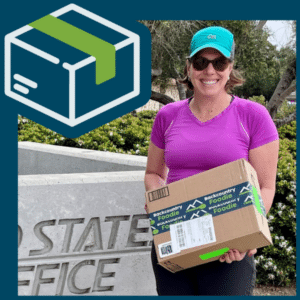
Resupply Service
Entrust resupply logistics to us, unlocking an immersive thru-hiking experience, free from worries.
What Our Members Are Saying

"Backcountry Foodie was a wonderful resource for my Colorado Trail planning. The recipes were easy and tasty, the tools were streamlined and easy to use, and the food planning which I had been dreading turned out to be fun! Thanks, Backcountry Foodie, for a great experience!"
Caroline D.

"I am just so wowed by your recipes! I am doing tests at home at this point and I am more excited than ever to get out backpacking so I can eat more of what I have been testing. These calorie-bomb meals are delicious, but would be very dangerous if I made them part of my home meal routine. 😉"
Robin M.

"I’ve been using Backcountryfoodie.com for over a year. I like the variety of meal recipes, but I really appreciate that Aaron is making sure that I’m getting a balance of carbs, fats, and protein. That keeps me hiking strong."
David B.

"Yesterday was the first time I used your meal planner feature to create my own with your recipes and I LOVE it! Having the water and oils quantities listed in the nutritional count was a surprising and most appreciated find! This will be our first thru hike and we are leaning heavily on your nutrition guidance and are very grateful for you."
Deborah A.

"I love what Aaron is doing! I firmly believe that nutrition is key to SO many parts of life and my biggest fear of a thru hike was not nourishing my body in a way that would help me have sustained energy, maintain muscle and stay mentally strong for 6 months. However, then I found Backcountry Foodie and I feel like it is TOTALLY possible."
Andrea M.

"On my five-day hike, your meals/recipes stood out. I look forward to them each day. In fact, for the meals where I did not use your recipes, I was disappointed in myself for not using your meals. You and your recipes definitely added to the quality of my trip!!!!!"
Paul H.

"Backcountry Foodie offers quick recipes that are easy to make, and they cover the sphere – cold soak, hot, gluten free, vegetarian, etc. You name it, they really do have something for everyone. As I get older and hike further, keeping my pack weight low while maintaining healthy nutrition is important." Read full review here.
Ellie

Frequently Asked Questions
Probably! You can filter our recipes by diet type including vegetarian, vegan, gluten-free, dairy-free, nut free, low-sodium, low-sugar, reflux-friendly, and bariatric-friendly. We also include special diet-friendly ingredient substitutions as appropriate.
Leave that stove at home if you want! We offer cold soak recipes and no-cook options.
Absolutely! Each recipe includes a PDF with field instruction labels, which can be downloaded and printed.
No, unless you want to dry your own ingredients. Only a handful of our recipes require a dehydrator.
Aaron is continually developing and testing new ultralight recipes. At least one new recipe is added each month.
Sign-Up & Save 10%
Sign-up for our weekly newsletter and save 10% OFF our memberships
while also being the first to know about new videos, podcast episodes, and recipes!
